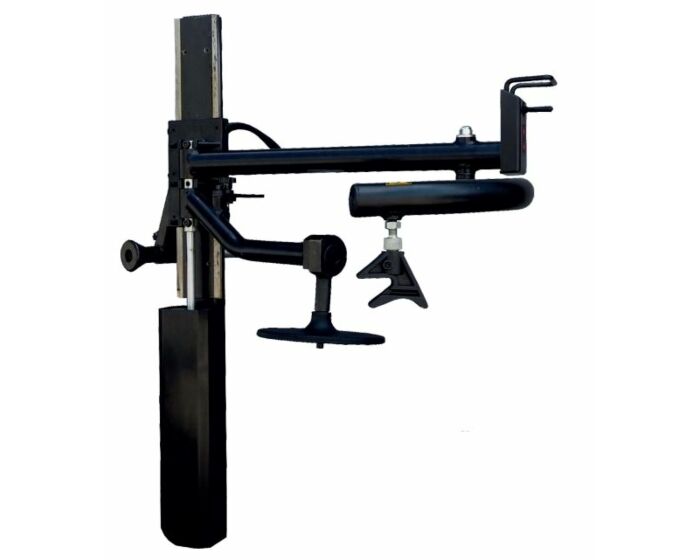We use cookies to make your experience better. To comply with the new e-Privacy directive, we need to ask for your consent to set the cookies. Learn more.
INVENTO TCS 524 Helping arm
Product category: Tyre changers
Price for: 1 PC.
Support arm for Invento TCS 524 tyre changers
- Details
-
Support arm for Invento TCS 524 tyre changers
- Accessories
- Warranty
-
Warranty: 12 months
- Safety
-
- Responsible Producer:
-
TIPTOPOL SP. Z O.O.
ul. Kostrzyńska 33
62-010 Pobiedziska
Poland
sklep@tiptopol.pl
+48618152200
Mechanical risks
The product has movable parts that can cause a variety of mechanical hazards during operation, which can lead to serious injuries.
Crushing and crushing: There is a risk that the moving parts of the product will crush or crush the body. It can lead to serious injury or permanent injury.
Cuts and punctures: Cuts, cuts, and even deeper injuries can occur if the user comes into contact with sharp edges or product components.
Impact and Fall Injuries: These can occur when objects fall over and fall from a height or are moved in an improper and dangerous manner. This can cause serious injuries, including broken bones and head injuries.
Trapping: If a body part becomes trapped between moving parts, it can lead to serious injury and loss of limbs.
Vibration: Exposure to prolonged vibration while using the device can damage muscles and nerves. This can lead to vibration syndrome, causing pain and dysfunction in the limbs.
To minimise these risks, it is recommended to use appropriate personal protective equipment, regularly inspect and maintain the equipment, and follow all manufacturer's recommendations for safe use and health and safety (Occupational Health and Safety) regulations.
Explosion Risk
When using certain products, such as pressurized vessels or chemicals, explosion hazards can occur, which can lead to serious consequences.
Gas explosions: These can occur when flammable gases such as propane, methane, butane or fuels are used or stored in improper conditions. This can lead to fires, property damage, and injury to people or even death.
Pressurized substances: Pressurized substances, such as gas or liquids, can explode due to rising temperatures or improper storage. The explosion of such substances can lead to serious injuries, property damage and a threat to life.
In order to minimize the risk of explosion, it is recommended to read the device's manual, information on the packaging and in the safety data sheets, use appropriate protective equipment, regularly inspect and maintain the equipment, and comply with all safety procedures and health and safety (Occupational Health and Safety) regulations.
Ergonomic risks
When working with heavy objects and in situations requiring prolonged use of force, a variety of ergonomic hazards can occur, which can lead to serious health consequences.
Muscle and joint overload: Muscle and joint overload can occur when lifting, carrying, or handling heavy objects. It can lead to pain, muscle tears and strains, joint injuries, and even structural damage to the body.
Poor posture at work: Working in the wrong posture, such as a hunched posture or twisted posture, can lead to tension in the muscles and spine. This can cause chronic back, neck and shoulder pain and back problems.
Prolonged use of force: Prolonged performance of activities that require a lot of physical effort can lead to fatigue and overloading the body. This can lead to exhaustion, muscle injuries and reduced work efficiency.
Prolonged vibration: Prolonged exposure to vibration, especially with the use of power tools, can lead to nerve and muscle damage. This can cause vibration syndrome, manifested by pain, numbness and loss of sensation in the limbs.
Monotony and repetitive movements: Performing the same movements for a long time can lead to micro-injuries and overloads. This can lead to injuries such as carpal tunnel syndrome, tendonitis and other musculoskeletal conditions.
To minimize ergonomic risks, it is recommended to use appropriate lifting techniques, ergonomic tools and workstations, and regular breaks and stretching exercises.
Environmental risks
A variety of environmental hazards can occur during the use and disposal of products, which can lead to serious consequences.
Environmental pollution: Products, especially those containing chemicals or plastic, can contribute to soil, water, and air pollution. This can lead to the degradation of ecosystems, groundwater and surface water pollution, and negative impacts on human and animal health.
Improper disposal of products: Improper waste management can lead to the uncontrolled spread of toxins and contaminants. This can result in severe environmental pollution, risks to public health, and the loss of valuable natural resources through a lack of recycling.
Electronic waste (e-waste): Electronic products, when not properly disposed of, can become a source of e-waste containing harmful chemicals and heavy metals. This can lead to soil and water contamination, as well as pose a risk to human and animal health.
To minimise environmental risks, it is recommended to manage waste appropriately, including segregation and compliance with environmental regulations.





